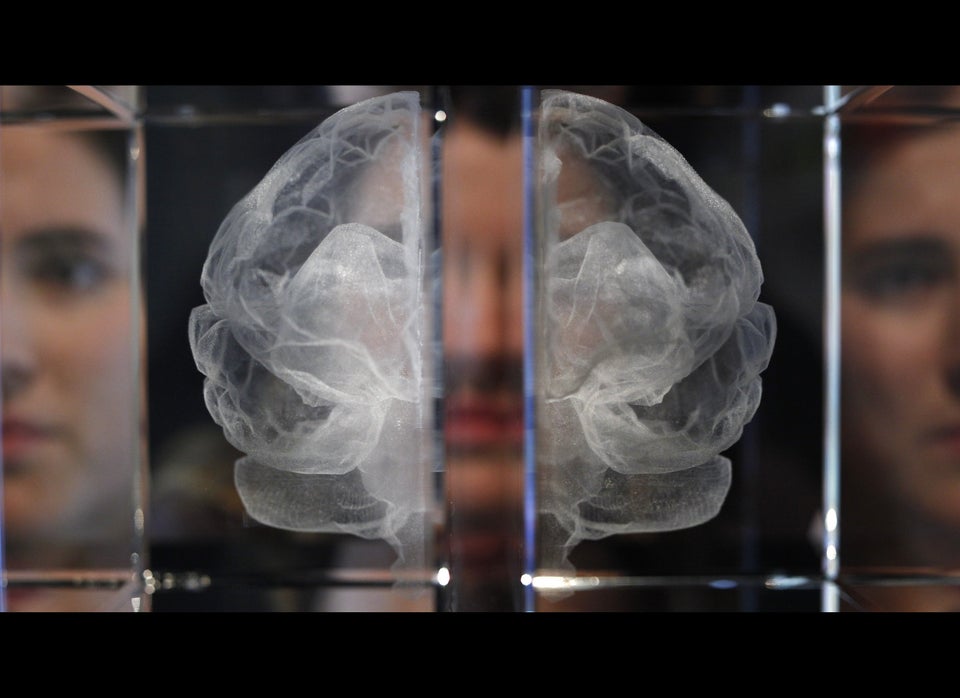
In some parts of America, marijuana possession may land you in jail for life. That was the case for Cornell Hood, a New Orleans man who was sentenced to life in prison after being found guilty of possessing and attempting to distribute marijuana.
Under Louisiana's repeat offender law, Hood's prior marijuana convictions resulted in the harsh sentence, The Times-Picayune reported, adding that authorities found a student loan application in the home Hood shared with his mother and his young son at the time of his arrest.
Similarly, the three strikes law, a statute enacted by some states, orders a minimum prison sentence for a convicted felon with two or more prior convictions. Repeat offenders in California, for example, face at least 25 years in prison for any third felony, ranging from crimes like murder or child molestation to nonviolent offenses, such as drug possession.
A 2005 report from California's Legislative Analyst's Office reported robbery, burglary, assault, and possession of drugs to be the most common offenses for which inmates were serving time under the three strikes law. Possession of controlled substances alone made up 12 percent of the state's total three strikes population at the time -- drug crimes in general accounted for 23 percent.
The law's heavy burden on nonviolent criminals and California's prison system has lead to the placement of the "Three Strikes Reform Act" on California's November ballot. If passed, the measure would soften prison sentences for nonviolent criminals. More than 4,000 inmates in California are serving life sentences under the three strikes law for nonviolent crimes, according to the Stanford Three Strikes Project.
The California Republican Party has publicly opposed the proposed reform, calling it an initiative to "weaken important public safety programs." And many supporters of the three strikes law argue that it not only helps fight serious crime, but also targets key players in California's ongoing drug war by locking up repeat offenders.
But does scientific evidence about drug addiction -- particularly in cases of repeated drug convictions -- have a place in the policy debate? To help answer that question, a better understanding is needed of what drug addiction actually does to the brain.
"There are really two issues," Dr. Stuart Gitlow, president of the American Society of Addiction Medicine, told The Huffington Post. "One issue is what brain alteration is present as a result of drug use, while the second is what brain alteration is there as a result of addictive disease."
Neuroscientists at the NIDA last year revealed how addiction can alter the brain stem, which controls functions like sleeping and heart rate, the cerebral cortex, which plays a key role in perceptual awareness and -- perhaps most importantly -- the brain's reward dopamine system.
"There’s all the data that comes out of Washington and studies demonstrating neurologic abnormalities," Gitlow said. But to find evidence of addictive disease prior to addictive behavior is to study the brain before it's ever hooked on a drug -- and this was explored recently by researchers at the University of California, San Diego School of Medicine.
Their study, published online in the September issue of the Journal of Studies on Alcohol and Drugs, examined MRI scans of adolescents' brains, ages 12 to 16, before they had been exposed to alcohol. A few years later, the researchers studied brain scans taken after those same adolescents first began to drink alcohol. Some of the adolescents had even developed heavy drinking habits.
It turned out, according to the study, that there was a difference in the brains of the heavy drinkers and the light drinkers before they even began to drink. The developing brains of those who later drank heavily showed less activity while completing tasks in the frontal, parietal, temporal, and basal ganglia areas of the brain than the other kids. Over time, the heavy drinkers showed less efficient information processing and working memory.
“That’s the opposite of what you’d expect, because their brains should be getting more efficient as they get older,” Dr. Lindsay Squeglia, a postdoctoral fellow at the UC San Diego Department of Psychiatry and the study's lead researcher, said in a statement. "Our results suggest there could be a pre-existing vulnerability, and could provide clues to the biological origins of problem drinking."
Gitlow told HuffPost this study not only underscores that addiction is a disease of the brain, but also suggests that early detection of addiction susceptibility could help curb future drug use. The focus, he added, should be on using recent research to prevent addictive behavior through early detection.
"There have been lots of studies going back to the 1970s that demonstrate differences in children who eventually become an addict," he said. "For instance, most addicts are stimulus augmenters, meaning they perceive the world being more irritating, more loud, more bright than everybody else does. If you look at kids of addicts they largely are stimulus augmenters ... this represents a clear neurophysiologic correlate, but no one has looked to see if the stimulus augmenters who are children of addicts have a higher likelihood of becoming addicts themselves."
Previous research suggests that genetics can play a role in the development of drug addiction, Gitlow said.
"Researchers are actively pinpointing specific genes that increase or decrease susceptibility to addictive disorders in general or to specific drugs, as well as those that affect the ease with which an individual may recover from an addiction," Dr. Nora Volkow, director of the NIDA, told HuffPost in an email. "Just recently, for example, researchers identified a cluster of genes involved in the early initiation of smoking, the transition to nicotine dependence, and vulnerability to smoking-related lung cancer and peripheral artery disease."
"Genetic screening may ultimately prove an invaluable tool in identifying people who are at high risk of abusing drugs and in tailoring effective addiction treatments," she added.
Gitlow and Volkow were commenting on just the science of addiction. But let's go back to the three strikes law. What does addiction have to do with being behind bars? Think about this: About two-thirds of all prison inmates meet the criteria for substance abuse or dependence, according to the Office of National Drug Control Policy, and less than 15 percent of those people receive treatment while incarcerated.
If researchers suggest we can possibly screen for vulnerability to drug addiction, can we "screen" for these risks in possible repeat offenders and offer treatment? It's complicated. But looking closely at the research raises such questions -- questions legislators might do well to keep in mind.
"Scientific methods are the best way we have of separating fact from opinion -- to determine what is factually true and what isn’t," Volkow said. "For example, while people may have opinions about what interventions 'make the most sense,' science can tell us whether or not they actually work. This in turn can inform the development of policies that have the best chance of success."
Looking forward, thinking about addiction as a chronic disease is "something of a paradigm shift," Gitlow said. "Because medicine is always seen as a reactive rather than proactive. The recent research suggests that we can be proactive."

